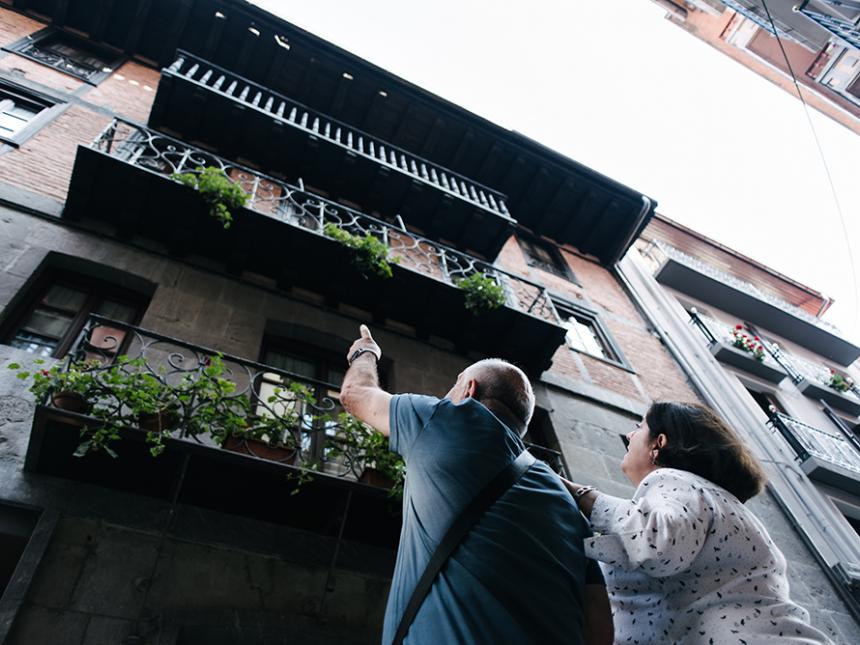You are here
9. Lapaza House

Lapaza House is one of the key examples of Basque architecture.
Belonging to an important family of artisans and traders, the fact that the first two storeys are built in ashlar limestone demonstrates the extent of their wealth. The upper floors, however, are made from bricks from the Municipal Brickyard. It has a wooden structure, cast iron balconies and carved wooden eaves.
Alongside it is one of Tolosa’s most singular streets: Lechuga, or Lettuce Street. Although the origin of the name is unknown, some say that it is due to being one of the town’s chilliest streets. In any event, it’s the only one to have maintained the tradition of decorating their doors with ash and hawthorn on St John’s Day. A custom very widely respected today, thanks to the work of the Udaberri dance group.
It’s also said that this was the first place to decorate its balconies for carnival, although originally they did it with bedspreads. Hidden halfway along the street, beside the old Garikano store, is the Txaparro cider house, the last of the 28 once dotted all over the Old Quarter.
Although closed to the public, its appearance remains pretty much unchanged. Here whole groups of friends and workers would meet for lunch washed down with cider. At that time there was no txotx (cider served straight from the barrel), meaning that each person would mark what they’d had to drink on the barrel in chalk. Customs change, and now the bars, with their pintxos and dishes, are the places to eat, drink and, more importantly, to meet friends. There are plenty to choose from.
Continue straight ahead to the next stop: Iturritza Palace.

